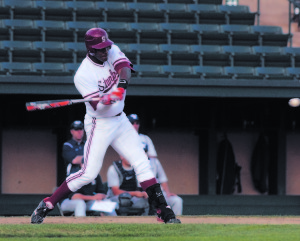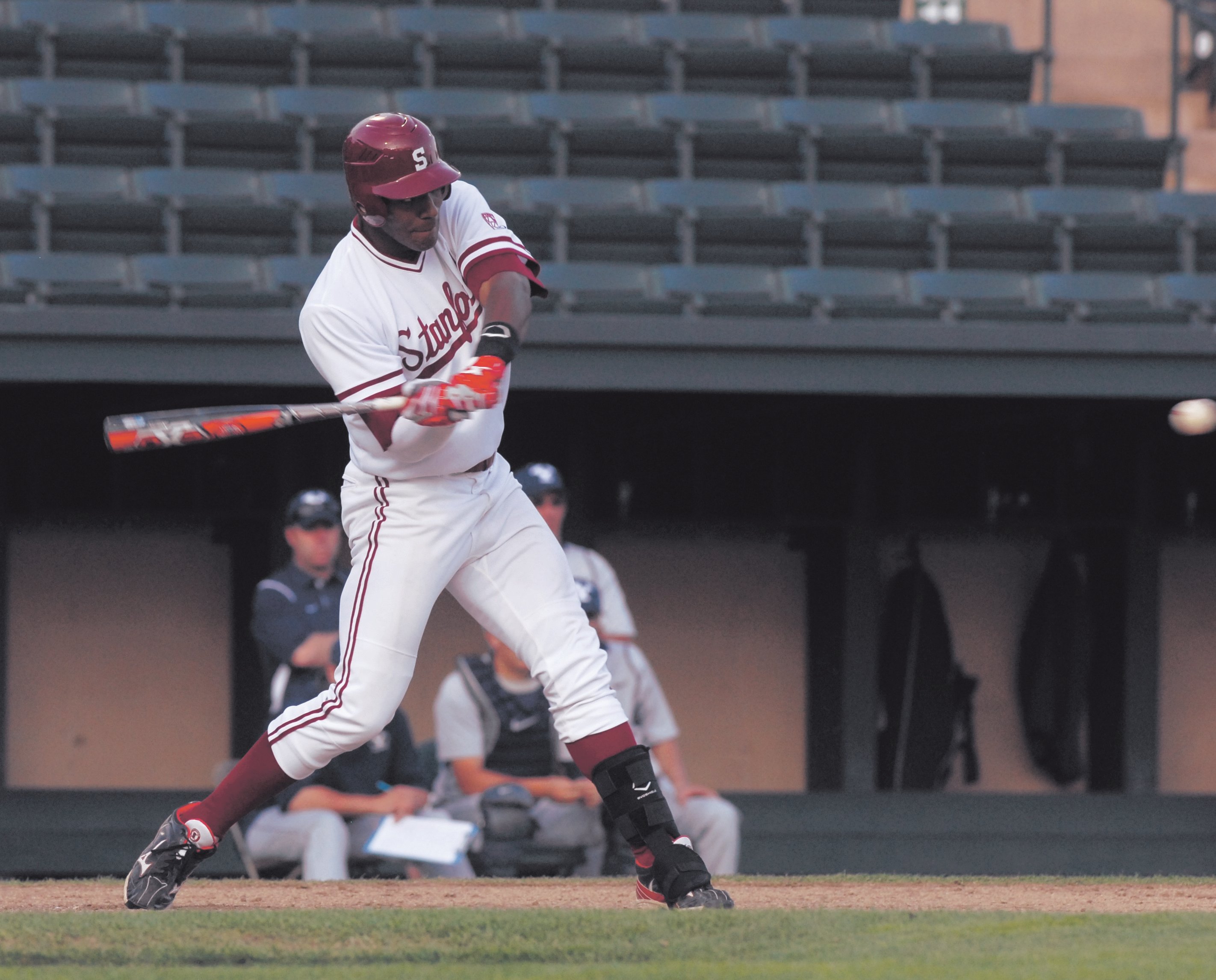After over a month of inconsistency, the Stanford offense finally showed what it is capable of at its best over the weekend against USC. Now, the challenge is to carry that offensive performance into the future in combination with its strong and reliable pitching staff to string together more wins.
The Cardinal (16-10, 5-4 Pac-12) will try to keep hold of its momentum on the road through Tuesday’s non-conference matchup with the San Jose State Spartans (11-21, 5-4 WAC).
The Cardinal averaged just under seven runs per game during its three-game series against the Trojans over the weekend, a very good sign for a team that averaged under four runs per game going into the series. The strong weekend included a 10-run, 17-hit offensive explosion on Saturday evening in which eight of the nine hitters in the Stanford starting lineup collected at least one hit.
Facing a USC pitching staff with an inflated 4.93 collective ERA definitely aided the Cardinal hitters and helped them put good numbers on the board. The offense will look to benefit from more of the same against SJSU, whose pitching staff limps into the contest with a 5.67 ERA and a 1.66 WHIP, while giving up over six runs per game.

No regular starting pitcher on San Jose State’s has an ERA below 4.43. The Spartan pitchers also walk almost as many hitters as they strikeout, having issued 121 walks and 40 hit batsmen while recording 146 strikeouts.
The Stanford offense will also be greatly boosted by the return of slugging junior outfielder Austin Wilson. Wilson appeared in two games against USC over the weekend, his first games back since an elbow injury against Rice in the season-opener sidelined him for almost two months.
Wilson’s return to form could be the catalyst that the Stanford offense needs to keep the offense alive. Batting eighth and playing as designated hitter in the series finale at USC, Wilson went 2-4 with a single, a double and two RBIs.
As a sophomore last year, the big outfielder hit at a respectable .285 clip and finished fifth in the Pac-12 in home runs with 10. He also led all Stanford hitters with 15 games in which he recorded multiple RBIs.
If Wilson can replicate his past success, the Cardinal offense will greatly benefit from the added power potential in the middle of the lineup.
Stanford’s pitching will have its hands full trying to contain a Spartans lineup that is hitting a solid .284 and averaging just under 10 hits a game.
Seven SJSU hitters with regular playing time have batting averages of over .280, led by junior Matt Carroll and his .369 average. The 6-foot-6 first baseman takes full advantage of his opportunities at the plate, having already driven in 29 runs on just 38 hits over the course of the young season. In comparison, Stanford’s leading RBI man, outfielder Austin Slater, has collected 17 RBI on 31 hits.
The Stanford pitching staff is well equipped to meet that challenge. All of Stanford’s pitchers have an ERA below 4.02, with the team mark sitting at a stingy 2.60. The Cardinal averages eight strikeouts and fewer than three walks allowed per game. It simply does not allow opposing runners to get on base easily, as evidenced by its 1.15 WHIP and .228 batting average against.
Stanford has also found itself in similar circumstances in many of its other non-conference weekday games. Often, teams coming from smaller conferences will face weaker pitching on a regular basis, inflating their hitters’ numbers to values that would otherwise have been much lower.
Former weekday opponents Saint Mary’s and Santa Clara both came into matchups against the Cardinal with good hitting on paper but faltered against the strong pitching of Stanford. Stanford’s pitchers will look to extend that trend.
First pitch is scheduled for 6 p.m. at San Jose State’s Municipal Stadium as the Cardinal will look to improve its record on the road to 8-5 with a victory over the Spartans.
Contact Do-Hyoung Park at dpark027 “at” stanford.edu.
